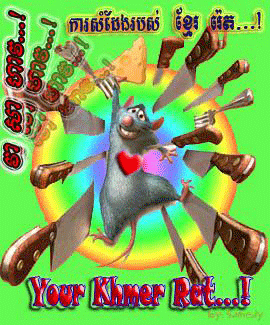Monday, March 30, 2009
The Khmer New Year
Thoamabal's attributes allowed him to become a layman in charge of religious ceremonies for all classes of people. Upon hearing this news another religious leader Kabel Maha Prohm, decided to challenge Thoamabal with tree riddles. He vowed that if Thaomabal could successfully answer the riddles he, Kabel Maha Prohm, would be beheaded; however if Thoamabal could not answer the riddles correctly then it would be Thoamabal who would be beheaded. Thoamabal insisted on having seven days to answer the puzzling enigma until Kabel Maha Prohm agreed.
For six days Thoamabal could not solve the problems and knew that he faced the prospect of being killed by Kabel Maha Prohm the next morning. He therefore decided ton hide himself and let his life fade away by natural causes. He hid himself beneath a pair of sugar palm trees in which a pair of eagles were nesting, that night Thoamabal overheard the eagles talking.
The female asked, "What will we eat tomorrow morning?" The male eagle replied, "We will eat the flesh of Thoamalobal because tomorrow he is going to be beheaded by Kabie Maha Prohm due to his inability to solve the riddles". The female then asked, "What are the riddles?" The male answered, "The first riddle is, where is luck to be found in the mornine?" Of course the answer is that luck is on the face because people always take water to wash their faces.
The second riddle asked, where is luck located at noon? It is on the chest because people always take water to wash their chests. Finally, the third question asked, where is luck located in the evening? The answer is that luck is on the feet because people always wash their feet in the evening. Thoamabal overheard all of the conversation and so happily returned to his temple. In the morning Kabel Maha Prohm came to ask Thoamabal if he could answer the three riddles.
Thoamabal successfully answered each of the riddles. Kabel Maha Prohm realixing he had failed, called his seven daughters, who were maids of Branma, to learn of his fate.Kabal Maha Prohm said, "Your father is foing to be beheaded in front of Thoamabal. If my head is set on the earth , if will set fire to Earth, if my head is thrown into the air, the rain will evaporate, if my head is thrown into the sea, the sea will dry up. Therefore I ask you, my seven daughters to get a holy metal tray on which to set your father's head". Having said this, he beheaded himself and his head was passed to Neang Toungsa, the eldest of his daughters. She placed her father's head on the holy tray and then proceeded to walk around Mount Meru for one hour, respectfully keeping the tray on her right hand. She then took the tray to the temporary sanctuary of Phnom Kailas. At Phnom Kailas, Preah Visakam created a hall where seven holy glasses (Pheakabatei Saphea) were set. The glasses were for use by angels during ceremonies. Each year the seven angels took turns to invoke the head of Kabel Maha Prohm to and complete a holy procession around Mount Meru. Following the holy procession the angels returned to their heaven.
The Seven Angels of the Almanac: If the annual procession talls on a Sunday then the day will be known as Toungsa. The other days are, Monday is Kooreak, Tuesday is called Reaksa, Wednesday is named Monday, Tuesday will be Kereney, Friday is known as Kemera and Saturday is Mahaotra.
Tanai Lieang Saka is the name of the third day of the New Year celebration. Buddhist cleanses the Buddha statues and elders with perfumed water. Bathing the Buddha images is the symbol that water will be needed for all kinds of plants and lives. It is also thought to be a kind deed that will bring longevity, good luck, happiness and prosperity in life. By bathing their grandparents and parents, children can obtain from them best wishes and good advice for the future.
The Three Days of Khmer New Year
Moha Songkran is the name of the first day of the New Year celebration. It is the ending of the year and the beginning of a new one. People dress up and light candles and burn incense sticks at shrines. The members of each family pay homage to offer thanks for the Buddha's teachings by bowing, kneeling and prostrating themselves three times before his image. For good luck people wash their face with holy water in the morning, their chests at noon, and their feet in the evening before they go to bed.
Wanabat is the name of the second day of the New Year celebration. People contribute charity to the less fortunate, help the poor, servants, homeless people, and low-income families. Families attend a dedication ceremony to their ancestors at the monastery.
Tanai Lieang Saka is the name of the third day of the New Year celebration. Buddhist cleanses the Buddha statues and elders with perfumed water. Bathing the Buddha images is the symbol that water will be needed for all kinds of plants and lives. It is also thought to be a kind deed that will bring longevity, good luck, happiness and prosperity in life. By bathing their grandparents and parents, children can obtain from them best wishes and good advice for the future.
Khmer New Year Traditions
In temples, people erect a sand hillock on temple grounds. They mound up a bigpointed hill of sand or dome in the center which represents Culamuni Cetiya, the stupa at Tavatimsa, where the Buddha's hair and diadem are buried. The big stupa is surrounded by four small ones, which represent the stupas of the Buddha's favorite disciples which are Sariputta, Moggallana, Ananda, and Maha Kassapa. There is another tradition, that is pouring water or plaster on someone.
Khmer New Year is a time to prepare special dishes. One of these is kralan, a cake made from steamed rice mixed with beans or peas, grated coconut and coconut milk. The mixture is stuffed inside a bamboo stick and slowly roasted.
Khmer games
Cambodia is home to a variety of games played to transform the dullest days into a memorable occasion. Through-out the Khmer New Year, street corners often are crowded with friends and families enjoying a break from routine, filling their free time dancing and play. Typically Khmer games help maintain one's mental and physical dexterity. The body's blood pressure, muscle system and brain all are challenged and strengthened in the name of fun.
• 1. "Tres"
A game played by throwing and catching a ball with one hand while trying to catch an increasing number of sticks with the other hand. Usually, pens or chopsticks are used as the sticks to be caught.
• 2. "Chol Chhoung"
A game played especially on the first nightfall of the Khmer New Year by two groups of boys and girls. Ten or 20 people comprise each group, standing in two rows opposite each other. One group throws the "chhoung" to the other group. When it is caught, it will be rapidly thrown back to the first group. If someone is hit by the "chhoung," the whole group must dance to get the "chhoung" back while the other group sings.
• 3. "Chab Kon Kleng"
A game played by imitating a hen as she protects her chicks from a crow. Adults typically play this game on the night of the first New Year's day. Participants usually appoint a person with a strong build to play the hen leading many chicks. Another person is picked to be the crow. While both sides sing a song of bargaining, the crow tries to catch as many chicks as possible as they hide behind the hen.
• 4. "Bos Angkunh"
A game played by two groups of boys and girls. Each group throws their own "angkunh" to hit the master "angkunhs," which belong to the other group and are placed on the ground. The winners must knock the knee of the losers with the "angkunh." "Angkunh" is the name of an inedible fruit seed, which looks like the knee bone.
• 5. "Leak Kanseng"
A game played by a group of children sitting in circle. Someone holding a "kanseng" (Cambodian towel) twisted into a round shape walks around the circle while singing a song. The person walking secretly tries to place the "kanseng" behind one of the children. If that chosen child realizes what is happening, he or she must pick up the "kanseng" and beat the person sitting next to him or her.
• 6. "Bay Khom"
A game played by two children in rural or urban areas during their free time. Ten holes are dug in the shape of an oval into a board in the ground. The game is played with 42 small beads, stones or fruit seeds. Before starting the game, five beads are put into each of the two holes located at the tip of the board. Four beads are placed in each of the remaining eight holes. The first player takes all the beads from any hole and drops them one by one in the other holes. He or she must repeat this process until they have dropped the last bead into a hole lying beside an empty one. Then they must take all the beads in the hole that follows the empty one. At this point, the second player begins to play. The game ends when all the holes are empty. The player with the greatest number of beads wins the game
• 7. "Klah Klok"
A game played by Cambodians of all ages. It is a gambling game that is fun for all ages. There is a mat & dice. You put money on the object that you believe the person rolling the dice (which is usually shaken in a bowl type) and you wait. If the objects face up on the dice are the same as the objects you put money on. You double it. If there are two of yours you triple, and so on.
http://en.wikipedia.org/wiki/Khmer_New_Year
Saturday, March 28, 2009
Friday, March 27, 2009
Tourist Attractions In Cambodia
| ||||||||||||||||||||||||||||||||||||||||||||||||||||||||||||
| | ||||||||||||||||||||||||||||||||||||||||||||||||||||||||||||
|
Preah Vihear Temple (Prasat Preah Vihear)
| Founded and repaired : | Suryavarman Ⅰ, Suryavarman Ⅱ | |
| Period of built: | 11th & 12th Centuries | |
| Primary deity: | Shiva | |
| Architecture style: | Banteay Srei Style and others | |
 Preah Vihear Temple (Prasat Preah Vihear) is a Hindu temple situated atop 525-meter cliff in the Dangrek Mountains in the Preah Vihear Province. In 1962 the International Court of Justice in the Hague ruled that it belonged to Cambodia.
Preah Vihear Temple (Prasat Preah Vihear) is a Hindu temple situated atop 525-meter cliff in the Dangrek Mountains in the Preah Vihear Province. In 1962 the International Court of Justice in the Hague ruled that it belonged to Cambodia.
The adjacent land to the north is under Thailand's control. Affording a view for many kilometers across a plain, Prasat Preah Vihear has the most spectacular setting of all the temples built during the six-hundred years-long Khmer Empire. As an edifice-complex of the Khmer empire's spiritual life, it was temples in being constructed along a long north-south axis, rather than having the conventional rectangular shape plan with orientation toward the east.
The temple gives its name to local province Preah Vihear, in which is located. On July 7, 2008, Preah Vihear was listed as a UNESCO World Heritage Site.

Ground Plan of Prasat Preah Vihear
Construction of the first temple on the site began in the early 9th century; After that many building has been added in the following centuries it was dedicated to the Shiva Hindu god in his manifestations as the mountain gods Sikharesvara and Bhadresvara. The remaining part of the earliest structure of the temple, however, date from the Koh Ker period in the early 10th century, when the empire's capital was at the city of that name. Today, elements of the Banteay Srei style of the late 10th century can be seen, but most of the temple was constructed during the reigns of the kings Suryavarman Ⅰ(1002–1050) and Suryavarman Ⅱ(1113–1150). An inscription found at the temple provides a detailed account of Suryavarman II studying sacred rituals, celebrating religious festivals and making gifts, including white parasols, golden bowls and elephants, to his spiritual advisor, the aged Brahman Divakarapandita. The Brahman himself took an interest in the temple, according to the inscription, donating to it a golden statue of a dancing Shiva.
The site
The temple complex runs 800m along a north-south axis, and consists essentially of a causeway and steps rising up the hill towards the sanctuary, which sits on the clifftop at the southern end of the complex (120m above the northern end of the complex, 525m above the Cambodian plain and 625m above sea level).Although this structure is very different from the  temple mountains found at Angkor, it serves the same purpose as a stylised representation of Mount Meru, the home of the gods.
temple mountains found at Angkor, it serves the same purpose as a stylised representation of Mount Meru, the home of the gods.
The approach to the sanctuary is punctuated by five gopuras (these are conventionally numbered from the sanctuary outwards, so gopura five is the first to be reached by visitors). Each of the gopuras before the courtyards is reached by a set of steps, and so marks a change in height which increases their impact. The gopuras also block a visitor's view of the next part of the temple until he passes through the gateway, making it impossible to see the complex as a whole from any one point.
The fifth gopura, in the Koh Ker style, retains traces of the red paint with which it was once decorated, although the tiled roof has now disappeared. The fourth gopura is later, from the Khleang/Baphuon periods, and has on its southern outer pediment, "one of the masterpieces of Preah Vihear": a depiction of the Churning of the Sea of Milk. The third is the largest, and is also flanked by two halls. The sanctuary is reached via two successive courtyards, in the outer of which are two libraries.
Quoted from Wikipedia (Dated July 10, 2008)
Follow the ancient King’s Road for Preah Vihear via Beng Mealea and Koh Ker
1st Day Siem Reap to Koh Ker
 The alarm clock woke me up at 6am. The day had broken already. After meeting the Cambodian friend who is going with me, I made sure the route for our destinations.
The alarm clock woke me up at 6am. The day had broken already. After meeting the Cambodian friend who is going with me, I made sure the route for our destinations.
Preah Vihear monument is more than 200km away from Siem Reap near the Thai border. Our luggage is very small. We have only clothes for 3days and Cameras. First of all we aimed for Beng Mealea temple which is called East Angkor Wat. It was a bit cold in the early morning time. I held the bag in front. The road condition was very good. We saw many palm trees at the road side. And also we saw many buffalos bathing. Suddenly we found well dressed young ladies in colorful costumes at a road side village. We are very lucky this is the wedding ceremony. In Cambodia, immediately after the rainy season, they will start to organize wedding ceremony here and there. The bride and bride-groom in their snow white dresses were smiling at unexpected guest. After a 65km drive, we arrived at Beng Mealea monuments. This temple is very famous among Japanese visitors. Because the image of the monuments is closely resembles an animation movie [Raputa the flying castle]. Beng Mealea was built in 13th century. After the lunch we continued trip to Mt. Koulen and Koh Ker.
Angkor dynasty started at Mountaint Koulen in early 9th century as the kingdom of the Angkor region.
The Khmer empire controlled this region for nearly to 600 years. During late 13th century the Jayavarman VII’s reign, the empire covered whole of the Indochina Peninsula and part of the Malay Peninsula. We stayed at a guest house near by Koh Ker temple.
2nd Day Koh Ker to Preah Vihea

 Around 7am, we saw many students going the school. They were wearing white shirts and blue skirts or trousers. At the school in the play ground there are several food stands to provide breakfast for them. The Koh Ker temple is located at the East of Siem Reap120km away. It was from 928AD to 944AD the capital city of the Kingdom. It is famous for the 7 storey Pyramid style monuments of the Hinduish temple. This temple is called Prasat Thoum.
Around 7am, we saw many students going the school. They were wearing white shirts and blue skirts or trousers. At the school in the play ground there are several food stands to provide breakfast for them. The Koh Ker temple is located at the East of Siem Reap120km away. It was from 928AD to 944AD the capital city of the Kingdom. It is famous for the 7 storey Pyramid style monuments of the Hinduish temple. This temple is called Prasat Thoum.
The road for Preah Vihear temple from Koh Ker is under construction by the Chinese government with tied loan. We needed more than 3 hours drive from Koulen village to mountain foot. The final approach to the temple is very narrow and steep road. It’s partially paved however we had to get on a motor bike or a 4 wheels drive car. The big Naga (Snake) sculpture welcomed us. This is the gate for the temple in the sky. The national flags of Cambodia identifies the temple area as its territory. One more sign board explained the history of the place. The statement [I have the pride to be born as Khmer] tells you that the country Cambodia is the successor of the ancient Khmer empire which created the great civilization. Preah Vihear temple was built in 9th century and reconstructed many times. Present structure was completed mid 12th century during the reign of Yasovarman II.
Today there are many Cambodian migrants from other part of the country. They are running small businesses like souvenir sales. From the top of the mountain we could look over the big plain spread out on Cambodian side. We could look over the far West, East and South. We could feel comfortable winds at 600 meters above the sea level. Currently there is only one guest house near the temple. We got a room for the night. Many local people got together to watch a TV program in Thai language. They kindly invited us to sit down.
 3rd Day A visit to the Thai side and return to Siem Reap
3rd Day A visit to the Thai side and return to Siem Reap
The sunrises in the East, direction for Champassak where the Khmer people originated.
The present border area of three countries Laos, Thai and Cambodia was the original site of Khmer civilization. In the 13th century there was a direct King’s road from Preah Vihear to Wat Phu temple. The distance is less than 100km. Preah Vihear is the transit point to the northern Thai area. There are many Khmer monuments in Thailand also.
After breakfast we visited the border village in the Thai side. Currently there is no border check point for one day visitors on both sides. We crossed the border without a passport check. In 2007 more than 100,000 travelers visited Preah Vihear temple from the Thai side. We visite a Thai market and a visitors center for a few hours and returned to the temple again. At the main cathedral, an old nun was praying in front of Ganesha (god of wisdom).
I hoped this god give us a good idea for the Khmer Empire Heritage Trail.
Quoted from Kroma Magazine Published by APEX Cambodia Company
 | ||||||||||||||||||||||||||||||||
List of Guest Houses
|
http://www.mot.gov.kh/Hot_News/phv.html
Reasons Why I Love You !
|  |
 |
|
| 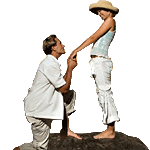 |
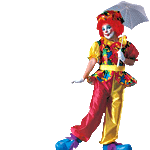 |
|
| 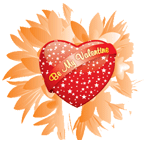 |
 |
|
| 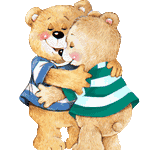 |
 |
|

12 Ways to Know That You Love Someone
You talk with him/her late at night and when you go to bed you still think of him/her.
ELEVEN:
You walk really slowly when you are with him/her.
TEN:
You don’t feel Ok when he/she is far away.
NINE:
You smile when you hear his/her voice.
EIGHT:
When you look at him/her,you do not see other people around you. You see only him/her.
SIX:
He/She is everything you want to think.
FIVE:
You realise that you smile every time you look at him/her.
FOUR:
You would do anything to see him/her.
THREE:
While you have been reading this, there was a person in your mind all the time.
TWO:
You’ve been so busy thinking of that person that you didn’t notice that number 7 is missing.
ONE:
You are going to check above if that’s true and now you are silently laughing to yourself.
NOW MAKE A WISH! YOU KNOW WHAT YOU WANT THE MOST…….

